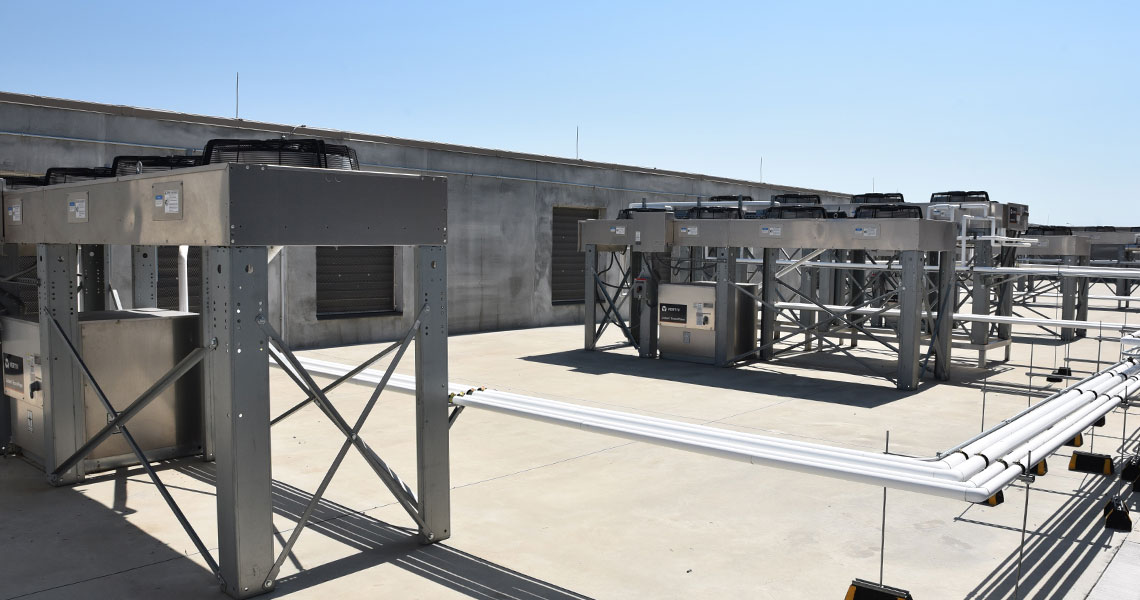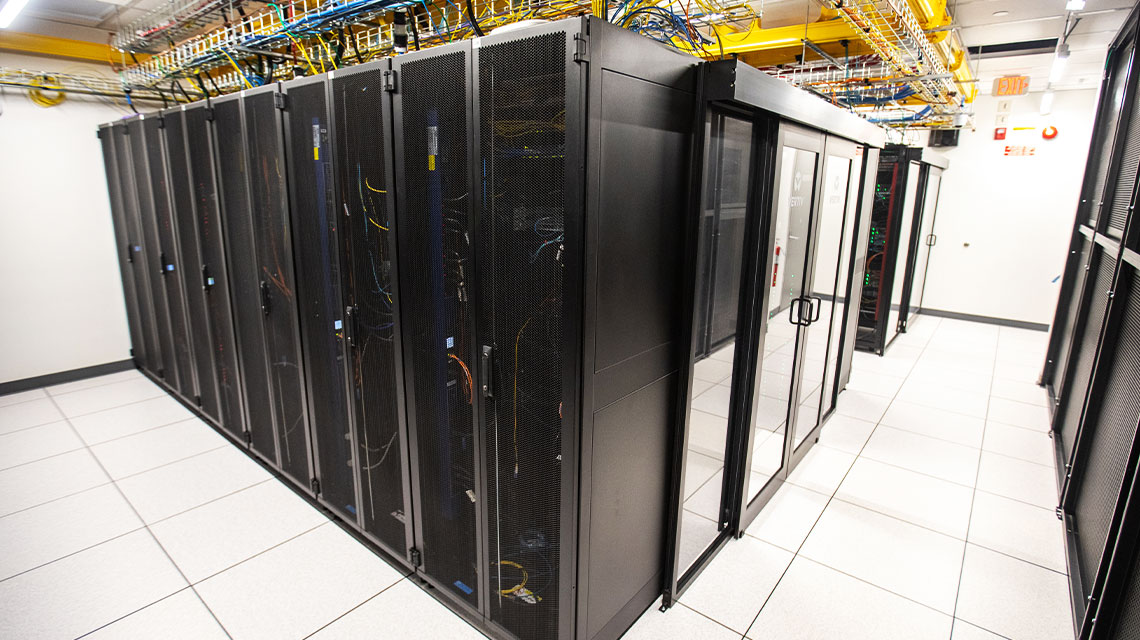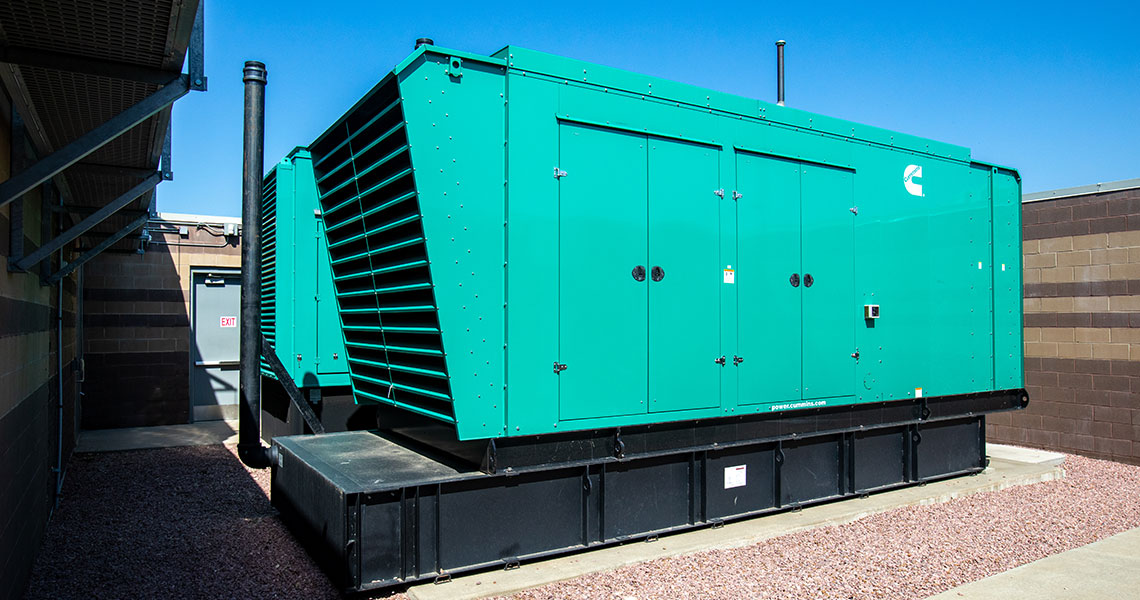
How well do you understand what data centers do? We live in a data-driven world,...
Tags: Data Center
Feb 22, 2023 | 8 min read
Tags: Data Center
Data centers. You may have heard your IT team mention them or have seen the term used in the news or latest technology magazine. Your company may already be supported by data center services, or perhaps should be. We work in a data-driven world. From sending emails or online purchasing to updating social media accounts or holding webinars, massive amounts of data are created while you’re at the office every day – and the amount is likely only going to increase.
This type of data management can often be overwhelming to manage in-house, which is where data center services come into play. So, what exactly is a data center? If you’re not sure, you’re not alone. Here are answers to five frequently asked questions about data center services.
Data centers are physical buildings located throughout the world that are specifically designed to house powerful computers used for data management. For example, you can find four Midco-operated data centers in Sioux Falls and Yankton, SD, and Fargo and Grand Forks, ND. Data centers have highly secured entries with video surveillance, badge readers, and escorted personnel procedures, which allow only authorized individuals access to what lies within.
Inside you’ll find a technical space filled with aisles of server racks sitting on raised floors with overhead trays for power and cables. For added network security, data centers also often provide secure caged spaces or individual private server suites, allowing others to see, but not touch. To ensure continuous, uninterrupted service, there are also redundancy measures in place such as backup generators, fire suppression systems and cooling/ventilation equipment. This allows for data center operations to run 24 hours a day, seven days a week, and 365 days out of the year.
It’s no surprise that high-volume data management requires significant power. Factors that influence the carbon footprint include a data center’s size, type, location and energy source. Finding a balance between managing and protecting our digital world while minimizing the environmental impact of this data management is challenging. The good news is that the data center industry isn’t ignoring the issue, but instead facing it head on. For example, the Uptime Institute, an unbiased resource for industry-leading data center services, is providing education and resources to help data center owners minimize their environmental impact. It is also true that while data centers may use more power with their concentrated collection of IT equipment, they are removing the original inefficient power draw that equipment had at its original location, by collocating it in a modern efficient data center.
Companies are looking at ways to minimize the power needed to run their data centers. One of the more significant energy losses for data centers is the cooling system used, which is essential to providing uninterrupted services. Therefore, building in cooler climates can help manage the temperature of a data center at a minimal cost. Data centers like Midco that are in cool climates can also reduce power draw by using outside air in cooler months through economizer technology. Finally, looking at renewable energy sources such as wind and solar power can help reduce greenhouse gas (GHG) emissions.

As previously stated, data management often requires large amounts of power, which can lead to large amounts of heat. Too much heat and humidity around IT equipment can impact its performance and longevity. Thus, proper cooling systems are essential for data center services.
Environmental controls: Air cooling systems combine raised floors with hot and cold aisle configurations. The computer room AC (CRAC) unit sends out cold air, causing the pressure below the raised floor to increase and send the cold air into the IT equipment. The cold air displaces the hot air, which is returned to the CRAC where it's cooled and recirculated. Also, simply building in cooler climates allows data centers to vent hot air outside and draw chilled outside air into the facility to maintain lower temperatures.
Fire protection/suppression system: The fire protection and suppression systems inside a data center extend far beyond a blaring alarm and some sprinkler heads on the ceiling. Most data centers utilize several components to prevent or extinguish fires. Portable fire extinguishers can be placed in critical areas and an emergency power off (EPO) switch is often another part of a fire suppression system. Tanks holding a fire suppression clean agent will allow fires to be extinguished without destroying equipment and makes for more efficient cleanup.

While these two terms can get used interchangeably, data center services and cloud services are not the same. At their most basic definitions, data centers and cloud providers both offer data processing, storage and networking. That is essentially where their similarities begin and end.
They are hardened physical entities that house customer-owned, operated and maintained data processing equipment. Companies seek these services to remove the burden and expense of maintaining their own on-premises data center while protecting their key company computer assets in a more secure and highly available environment. This means no one but those with proper credentials can access this data. Data centers can also improve workflow efficiency by providing information to employees in a seamless manner that won’t stop in the event of an internet outage. However, data center colocations are limited in their ability to expand data processing and storage, making companies responsible for installing any additional equipment that could be needed to increase their data needs.
Instead of a physical building, cloud providers allow companies to access their data via the internet. Depending on the company’s needs, cloud storage has nearly limitless capacity. With just a few clicks, compute and storage resources can be expanded to match the dynamic growth a company may experience. This flexibility comes at a cost that may be prohibiting to companies that do not need this capability. There is also the adjustment of having all your applications running remotely in cloud provider facilities. Migration of data to and from will also increase costs.
Cloud providers do offer many different platform options to run your applications on, but the research and analysis that goes into a final decision could be very time-consuming, and costly, and may require the services of a consultant. Cloud storage can be accessed anywhere with an internet connection, which brings a higher level of convenience but could impact the application performance and increase the risk of cyber threats. Speaking of cyber security, data is entrusted to a third party with cloud vendors, giving companies less direct control over their data management.

It’s rare that a data center, itself, goes down. After all, they are designed to minimize that very event from happening with 24/7 operations and easy local network redundant connectivity. The more appropriate question is what happens if your existing on-premises data room or single data center network connection goes down? Time lost. Files lost. Productivity lost. Maybe even revenue lost. None of these are desirable.
Some common causes of outages include natural disasters, cyberattacks, and network or power outages. While this can seem scary, most of these causes are avoidable with preparation and planning offered through data center services. It's why Midco provides redundant network circuits in all of its data centers.
Natural disasters: Data centers can be susceptible to fires, floods, tornadoes, ice storms and earthquakes. Identifying the potential risks based on a data center’s location, its building design and redundant design features can help prevent or minimize downtime. If an event occurs and a natural disaster strikes, data centers are prepared with all the necessary plans and tools such as fire protection and suppression systems and weather-hardened structures to protect the physical assets that lie within data centers.
Cyberattacks: Spoofing, spyware and denial of service are a few techniques used by attackers to gain unauthorized access to secure data. Once access is gained, these attackers can control a company’s network to use to their benefit. Attackers could also use ransomware to hold information hostage. Fortunately, data center providers strive to prevent the occurrence of common events such as denial of service by continuously monitoring devices, updating security patches and scanning equipment for potential vulnerabilities, which can combat many security attacks.
Power outages: Predicting when the power gets knocked out or for how long isn’t so easy. Power outages can last for just a few minutes or perhaps days, depending on what led to the outage. Data centers have robust plans in place to protect users during a loss of power. One method is to use a full uninterruptible power supply (UPS) that will supply power until the power comes back on. Along with backup diesel generators with automatic failover or the use of solar panels, allowing power to be generated independently from a local power grid.
What is essential to remember is that as technology advances and the data we generate evolves, so will data centers. The team at Midco continues to keep its finger on the pulse of data center industry trends to keep your data protected, connected and accessible today and tomorrow.
Midco also combines data center services with our owned, operated and engineered fiber-optic network. If you’d like to set up a time to tour any one of the four locations, reach out to a Midco sales consultant.
How well do you understand what data centers do? We live in a data-driven world,...
Tags: Data Center
Extend your network closer to the edge with colocation in local (regional) data centers to...
Tags: Data Center
Midco’s data centers are carrier-neutral. But how does that work – and why does it...
Tags: Data Center

